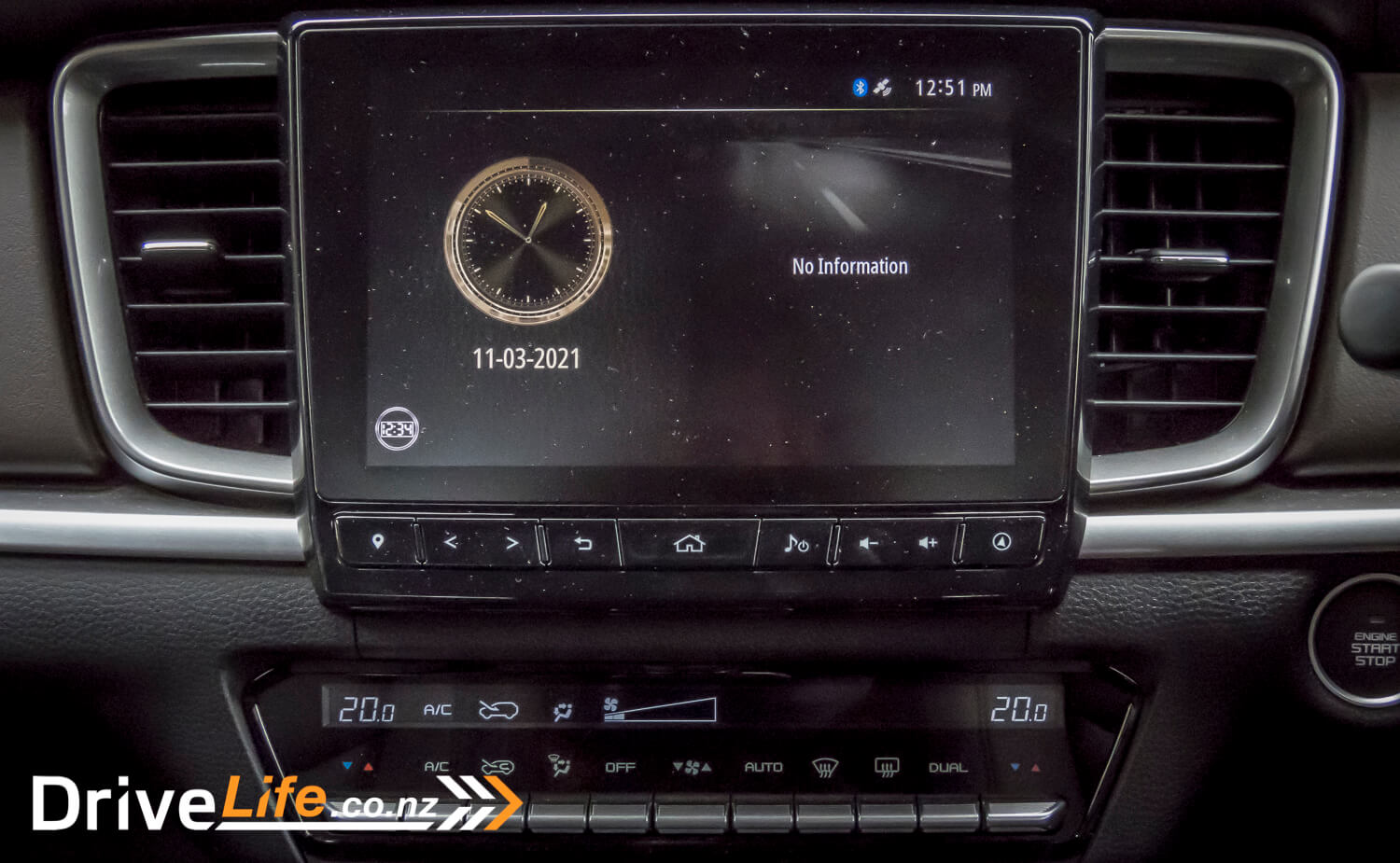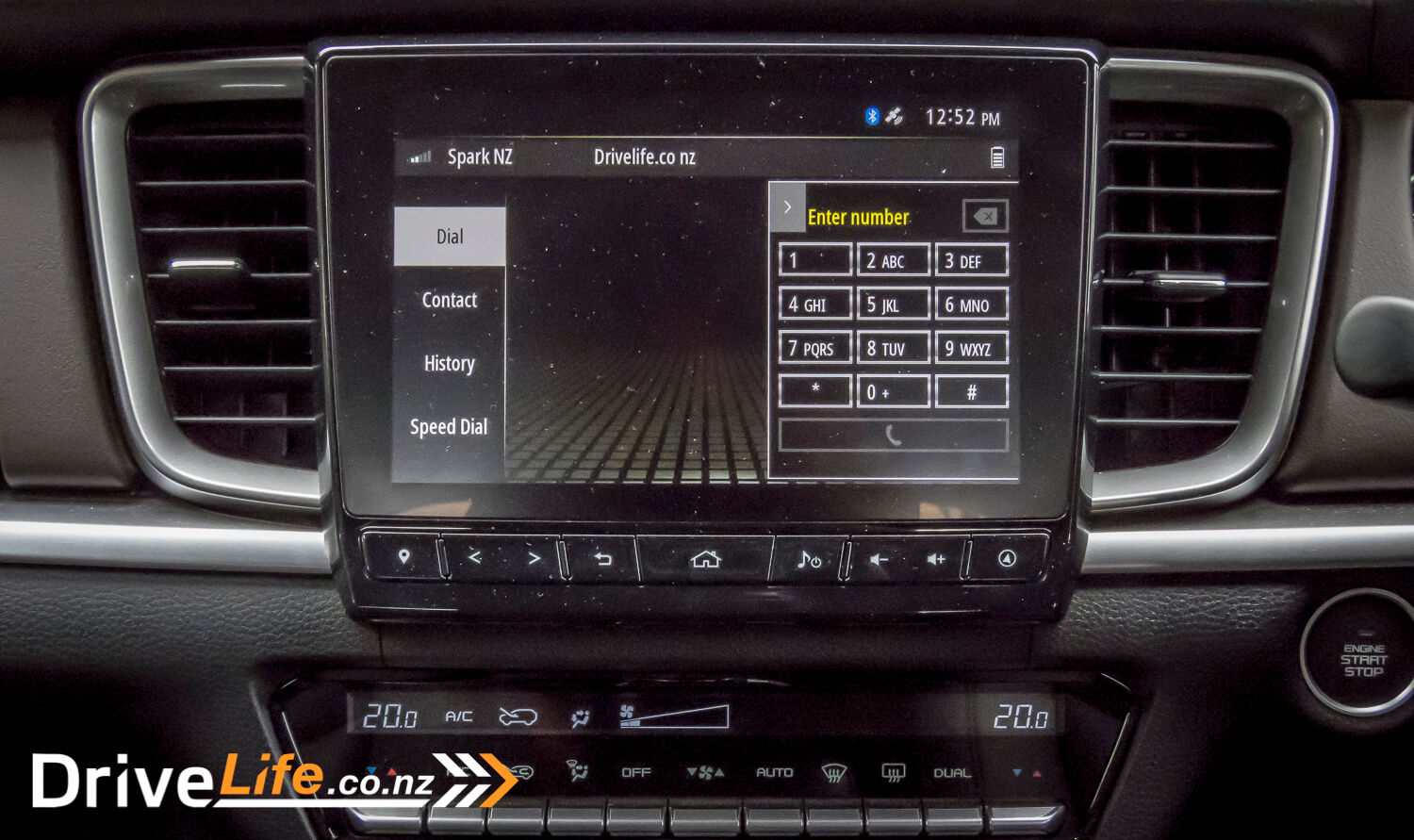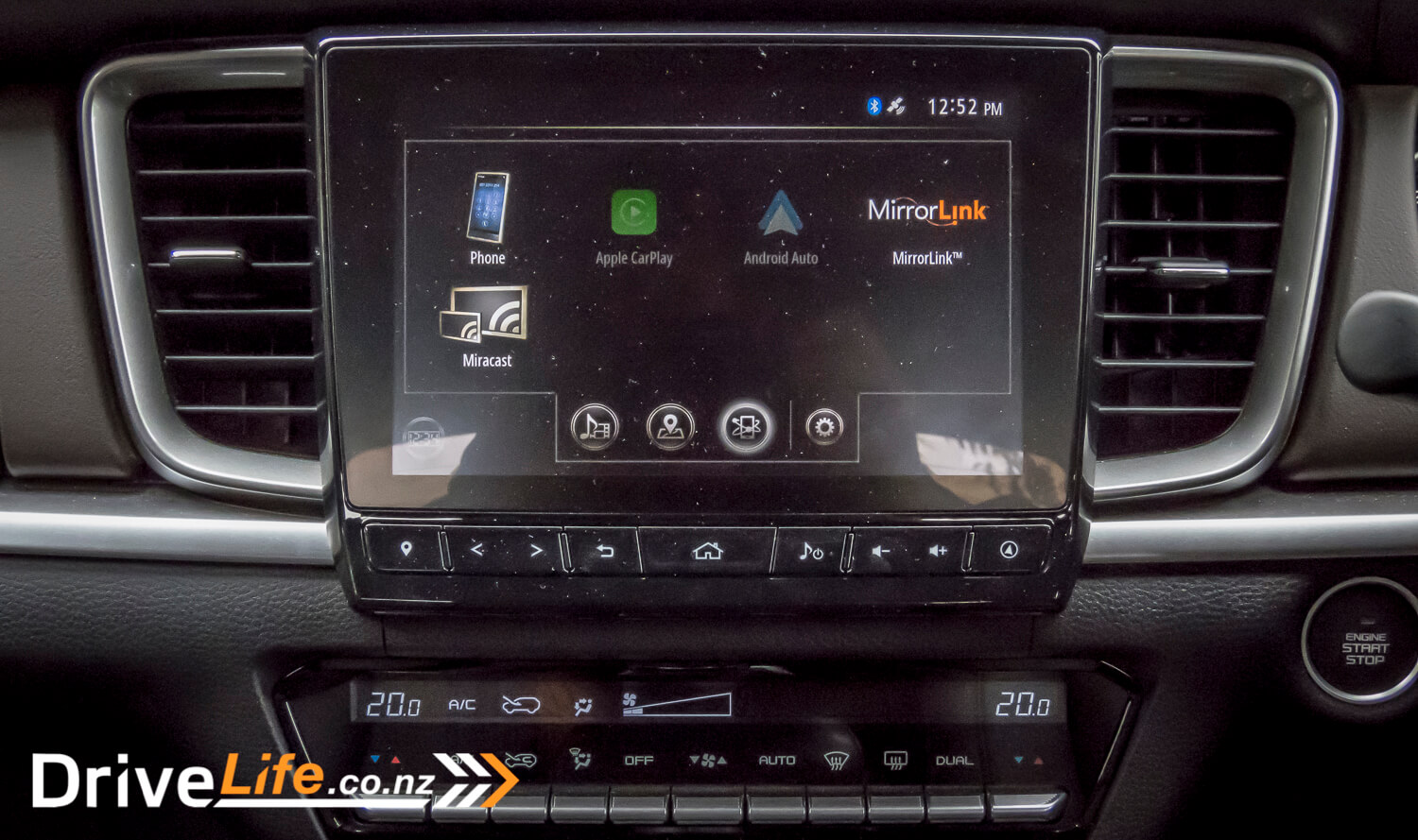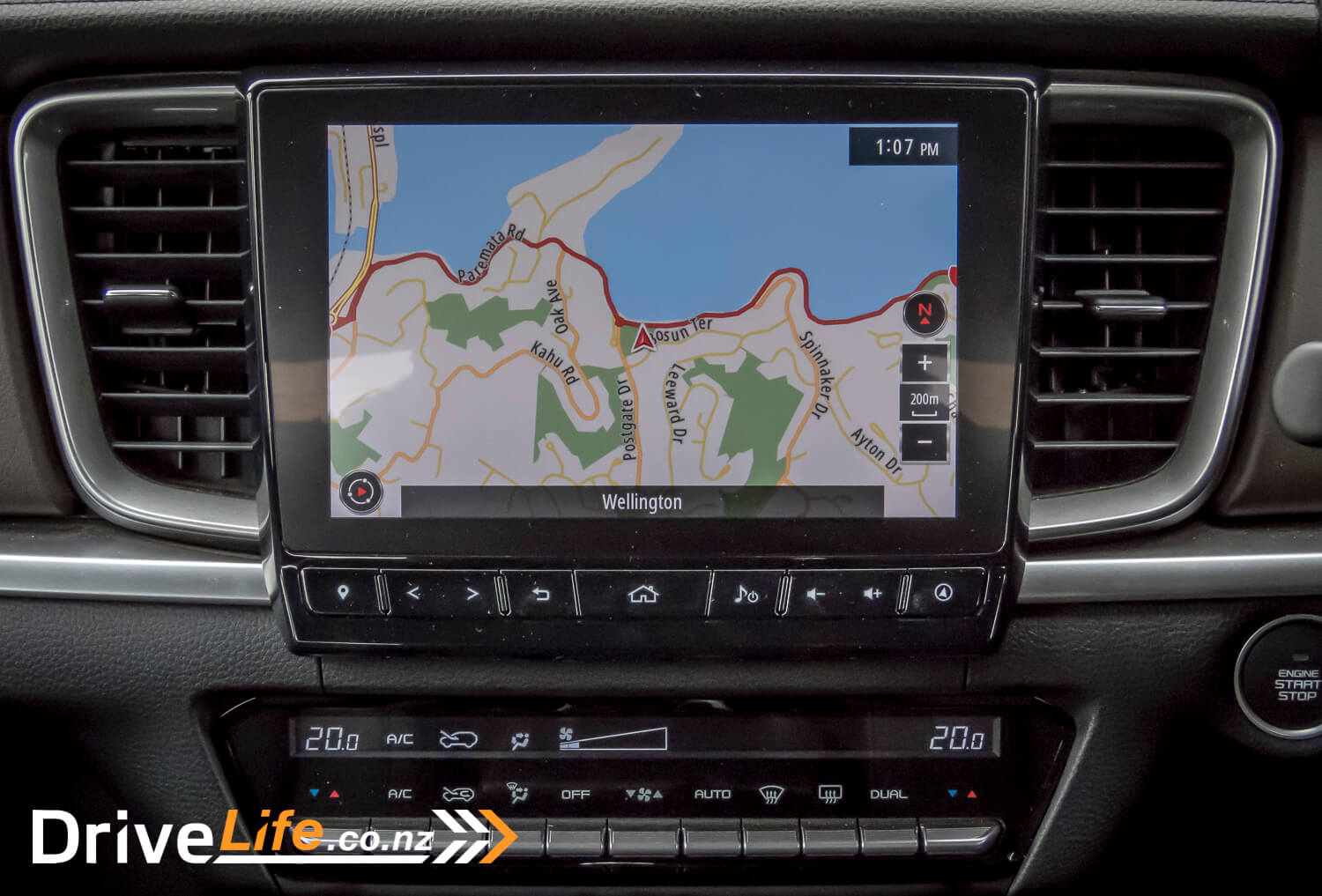As a car enthusiast, I find myself mulling over certain trends in the automotive world.
People like crossovers; they like the idea of going-out camping with the family, they like a spacious vehicle for the school run, and feeling like they’re in a big, safe vehicle. People also like good fuel economy, the latest gadgets, and pretty LED lights. People are also the reason we have instructions on shampoo bottles.
Which leads me to the ute question; what is their appeal for the majority of people that aren’t using them as working vehicles? Fundamentally, you might as well be driving a motorised trailer. But people love utes, and admittedly, I sort-of do too.
It’s another entire vehicle class that’s sold on its potential. Go to the job site, tow the boat, carry the green waste, escape off-road while outrunning the zombie apocalypse, ya know, all those recreational desires.
Ultimately, the modern ute is projected as the do-it-all vehicle. It’s a working-class hero, and that makes it an aspirational vehicle to own.
These days, there’s realistically no greater middle-class status symbol than a new ute on the driveway.
Congrats! You’re a productive member of society. You recently scored that promotion. You’ve got your first mortgage. Young kids too, maybe? The oldest just started ripper rugby.
Achievements in stride, perhaps it’s time to treat yourself to a new family truck. Ya know, one that you can take the kids to school in, go on holiday, and importantly to brag about to your mates about over a pint on a Friday.
“Does she go?” “Yeah mate”. “Tow decent?” “Yeah”. “Nice”. Shut-up, Beaudy just scored another try. Missed the kick though. Typical.
Is it all sounding a bit familiar? Well, it’s the narrative of realistic success.
And being realistic, the modern ute’s range of duties now include being the family workhorse, as much as being at home on the job site.
Manufacturers know this too, as does Mazda. Hence, their answer to the modern ute question is with the new BT-50, which – in Mazda’s words – is built for “dress and jeans”.
Drivelife attended the launch of the BT-50 late last year, where the new ute made a good first impression, and recently, Mazda gave us the opportunity to fully review the top-spec BT-50 Limited.
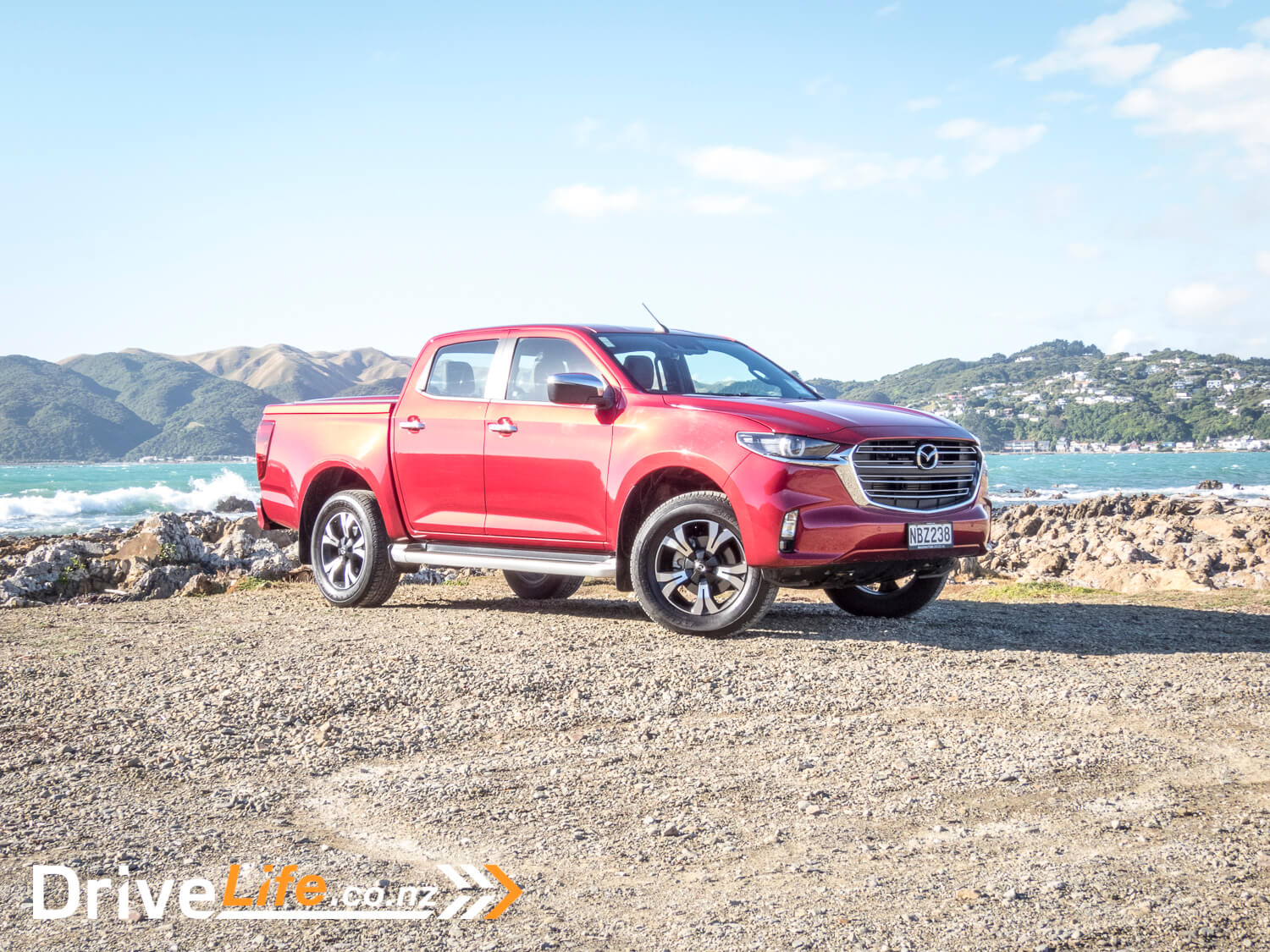
What’s In The 2021 Mazda BT-50 Range?
With nearly a decade between itself and its predecessor, this 2021 model marks the third generation of the BT-50.
The first BT-50 was based-off the Ford Ranger, and basically looked the same too. The second generation, released for sale in 2011, was the same although Mazda and Ford claim that they worked independently – albeit from Ford’s factory. However, the result spoke for itself, where the body used almost entirely different parts to its Ranger brother.
This third-generation Mazda BT-50 is different. The ties between Ford and Mazda were cut from earlier in the decade. This BT-50 takes on a new lease of life with a partnership from Isuzu.
Yes, the BT-50, is now based on the new 2021 Isuzu D-max.
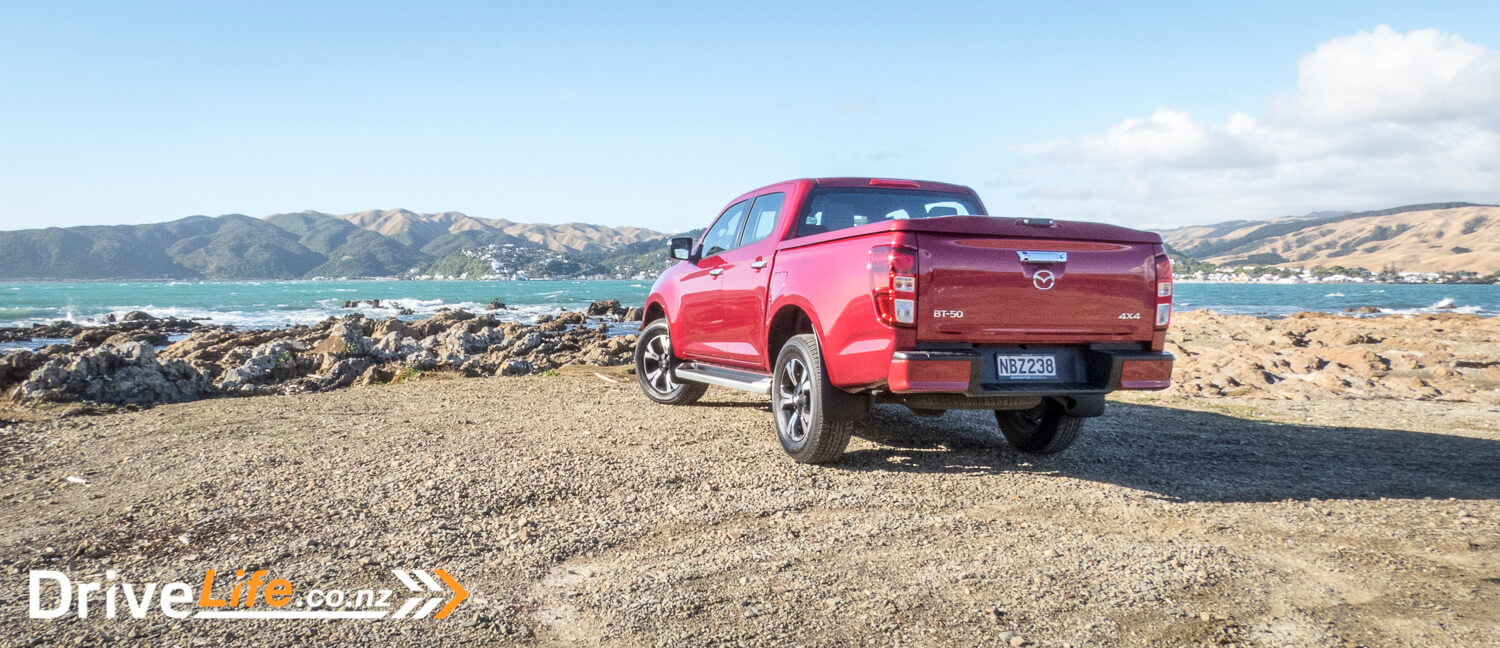
There are three trim levels for the BT-50, the base model GSX, the mid-range GLX and the top spec Limited. The BT-50 therefore has six models in the line-up, in either 2-wheel (2WD) or 4-wheel drive (4WD) configurations. Prices are as listed:
| Model | Price (NZD) |
| GSX – 2WD | $47,490 |
| GLX – 2WD | $51,490 |
| Limited – 2WD | $53,990 |
| GSX – 4WD | $54,490 |
| GLX – 4WD | $58,490 |
| Limited – 4WD | $60,990 |
Our test vehicle is the most expensive of the bunch, being the 4WD Limited. Our test vehicle also has an optional hard-lid accessory for an extra $3,210.
Remarkably, the BT-50 range undercuts the equivalent Isuzu product by over $7,000!(1) I’m not sure how they’ve managed that, but that’s definitely a win for Mazda.
The base GSX model comes with a number of features as standard, including; you’ll get 17’’ alloys, a 7’’ infotainment with 4-speakers, reversing camera, Apple CarPlay and Android Auto, 4.2’’ LCD dashboard display, automatic headlamps with auto high beams, rain sensing wipers, front and rear USB ports, cloth seats and 20 different safety technologies, including rear cross traffic alert, trailer sway control, lane departure warning, blind post monitoring, adaptive cruise control, and hill descent control.
Spec up to the Limited, you’ll add 18’’ alloys, a 9’’ infotainment with 8-speakers, SatNav, heated leather seats, leather steering wheel, 8-way power adjustable driver’s seat, proximity keys with push button start, dual zone climate control, auto-dimming rear-view mirrors, LED running lights and auto levelling headlamps, side steps, front parking sensors and remote engine start.
The BT-50 range is powered by a 3.0-litre 4-cylinder turbodiesel, pumping out 140kW of power and 450Nm of torque. This is paired with a 6-speed automatic gearbox. It’s the same engine and gearbox combination found in an Isuzu D-Max.
Braked towing capacity is 3,500kg, while tray payload is up to 1,085kg (lowest offering is 1,050kg). 4WD models receive a rear locking differential, plus the usual switchable 2H-4H and 4L (low-range) gearing settings.
You can have your BT-50 in six different colours, including Blue, Red, White, Grey, Silver and Black.
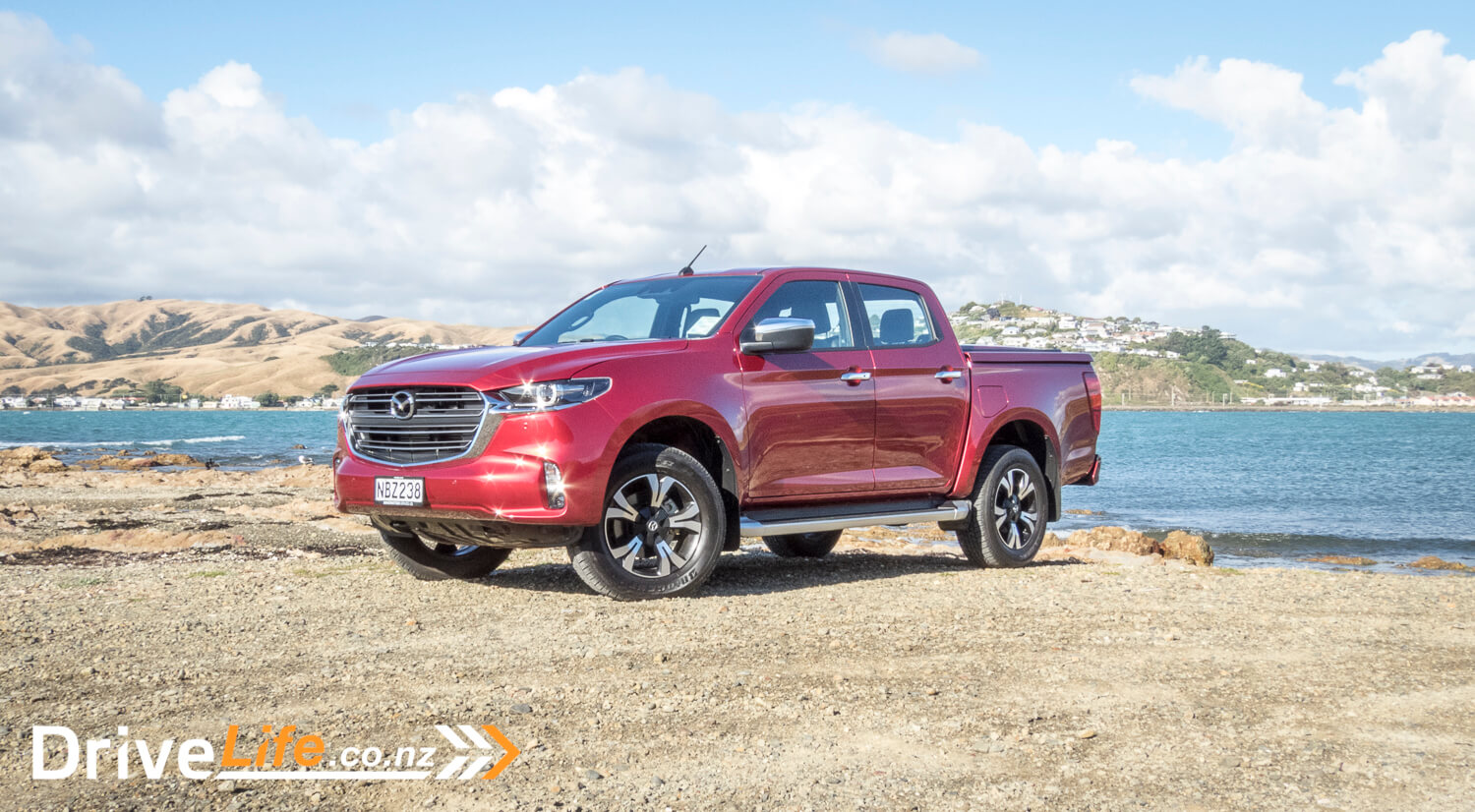
(1) when compared with the Isuzu D-Max LS at $67,990.
First impressions Of The 2021 Mazda BT-50 Limited
Let’s not beat around the bush here. This is an Isuzu D-Max, with a Mazda face.
Don’t believe me? Go park them next to each other. The dimensions, the body lines; everything from the A-pillar back is all the same shape as the Isuzu D-Max.
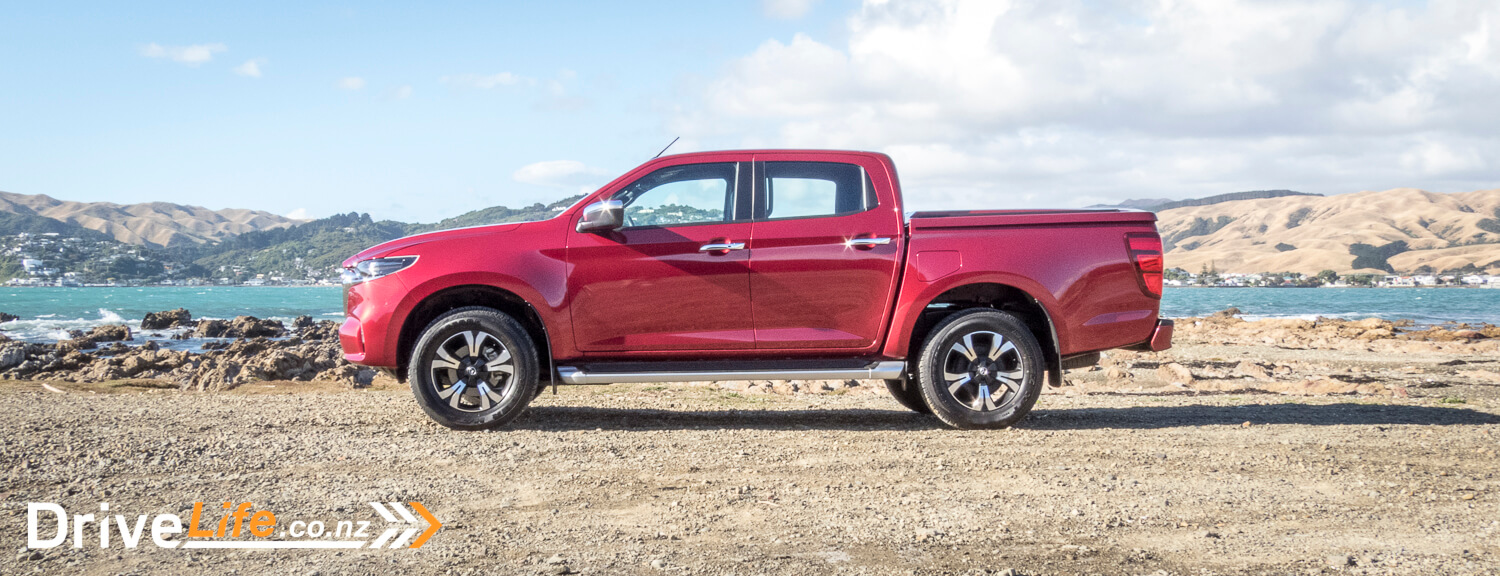
Although, it’s not simply a case of blatant plagiarism on the outside. We’ve mentioned the face, but what about the rest? The doors have different exterior carvings on them, as does the tailgate. The rear lights are different, and a handful more differences with that. There’s enough going for them to look like two original copies, if not looking with the trained eye.
So what does that mean? Well, the newest D-max is a decent looking ute, ergo, the BT-50 looks good too. Which do I prefer? Probably the D-Max. Sorry Mazda.
Our test vehicle came in Red Volcano Mica, which made the BT-50 look quite presentable. Although, it’s not Mazda’s rich Soul Red Crystal Metallic, which arguably is one of the best reds on any new car. Soul Red is not available for the BT-50.
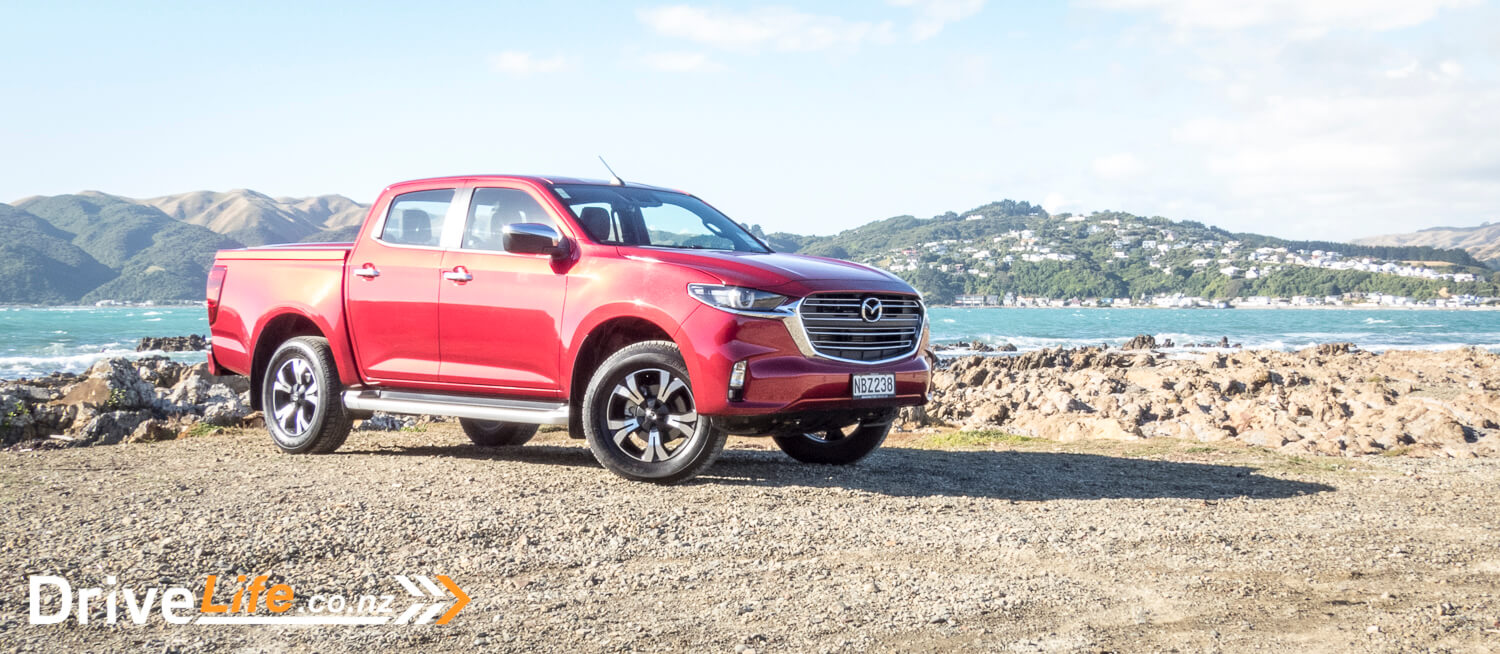
What’s The Interior Like On The 2021 Mazda BT-50 Limited?
Climb inside the BT-50, and you’ll find more copied homework. The seats, the dashboard, the steering wheel, the instrument cluster and the infotainment, they’re virtually all the same as in the Isuzu D-Max. Good? Well, mostly yes.
As first impressions go, the cabin is great. The design is clean and uncluttered and there’s plenty of good quality materials used, without heavily compromising on the robustness you’d expect from a ute. Looking at the inside alone, there’s nothing immediately telling you that it’s a ute – and that’s a good thing.
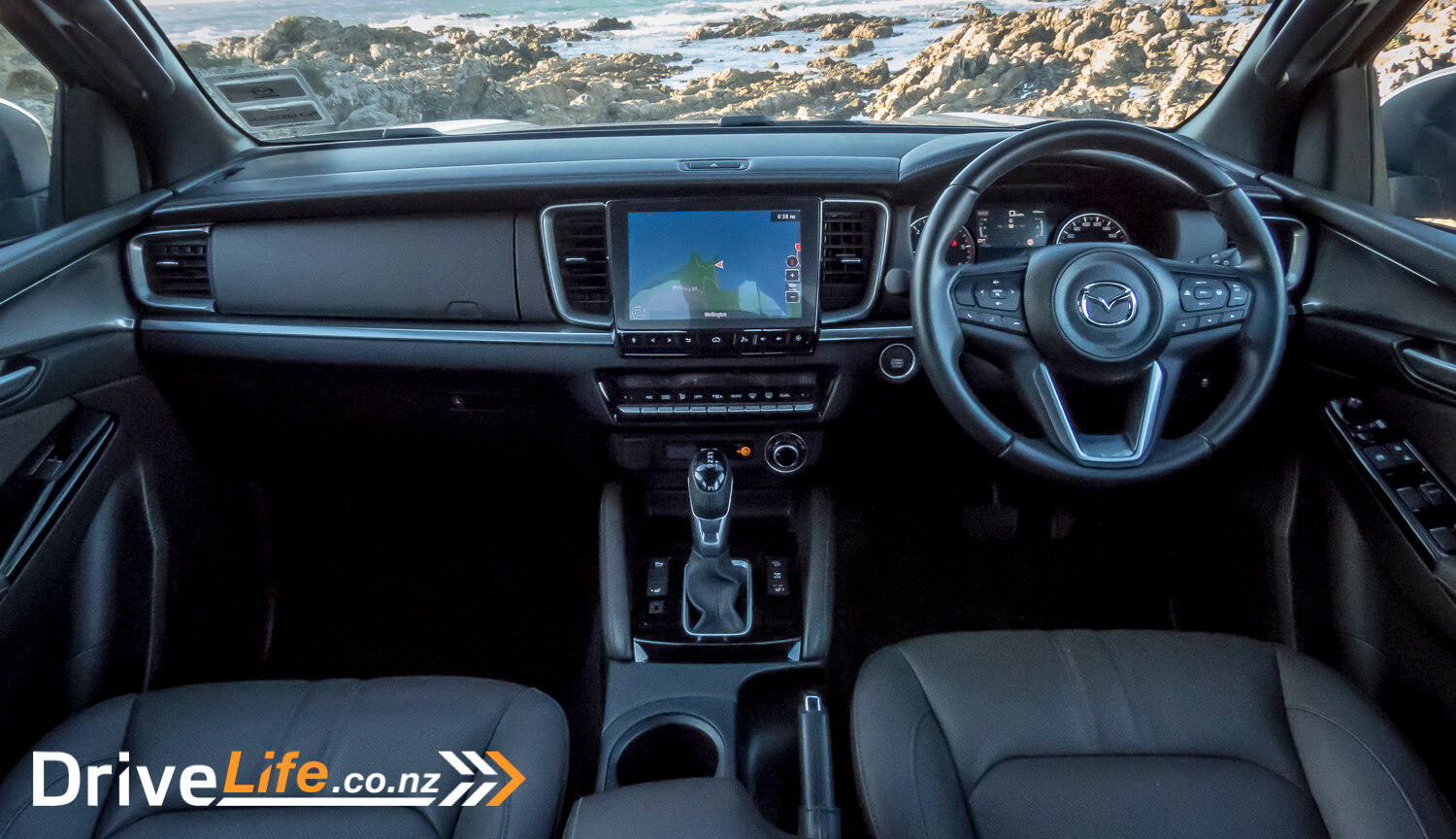
However, there are a few tricks inside the cabin to give you the illusion of quality. For example, the whole dashboard looks like it’s trimmed with leather – looks being the key word here. In reality, only the instrument surround and the first few inches of the dash have leather trim. Beyond that, the dashboard is just a textured plastic.
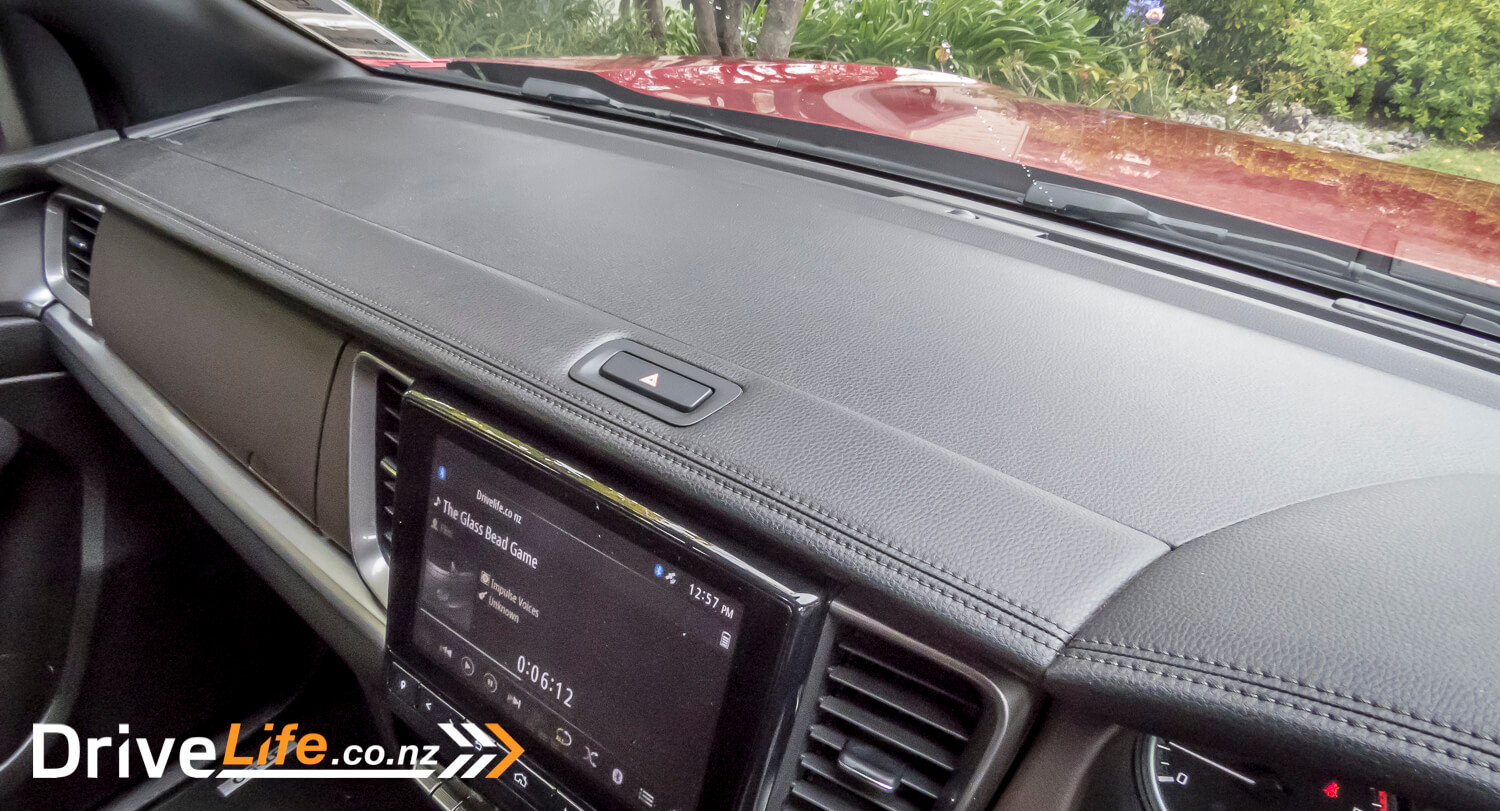
The climate control buttons have a silver finish, suggesting they’re made of metal. You’d be wrong – they’re plastic too, but they are nicely dampened.
Aside from a few unanticipated plastics, many pieces pass the quality test. I should also mention, the dashboard isn’t an exact carbon copy of the D-Max. The D-Max has a few extra storage cubbies.
In the centre is the 9’’ infotainment screen, upsized for the GTX and Limited models. Like any system, there’s a learning process involved, but the UI is still reasonably intuitive. The screen has decent resolution, but the touch responsiveness isn’t quite up to 2021 standards. However, I have experienced worse in other new cars, plus the system appears to work faster with the physical buttons. Aside from that, Bluetooth pairing was a breeze, and there’s also wireless Apple Carplay.
My favourite bit? That’d be the speakers. Mazda always seems to get this part right. To my ears, they’re better than the speakers in other utes of this price segment. The Limited has the 8-speaker system, which even includes little speakers housed directly above your head in the cabin.
Although, I did have one gripe with the system. Under its default settings, every interaction has an accompanying ‘beep’. This includes adjusting the damn volume! Want to turn it down 10 levels? Here’s ten unnecessary beeps to play over the top of your music. Fortunately, you can switch this off, but why does this exist in the first place?

The front seats are lifted from a D-Max, but they do wear their own stitching patterns. The 8-way power driver’s seat is nicely configurable, but if you’ve got broader shoulders like myself, they might feel slightly odd at first.
Why? The shoulder bolstering of the chair is quite far forward. Due to that, I never felt like I was naturally sitting against the back of the chair. I should mention that those who weren’t quite as wide as myself sat perfectly happy.
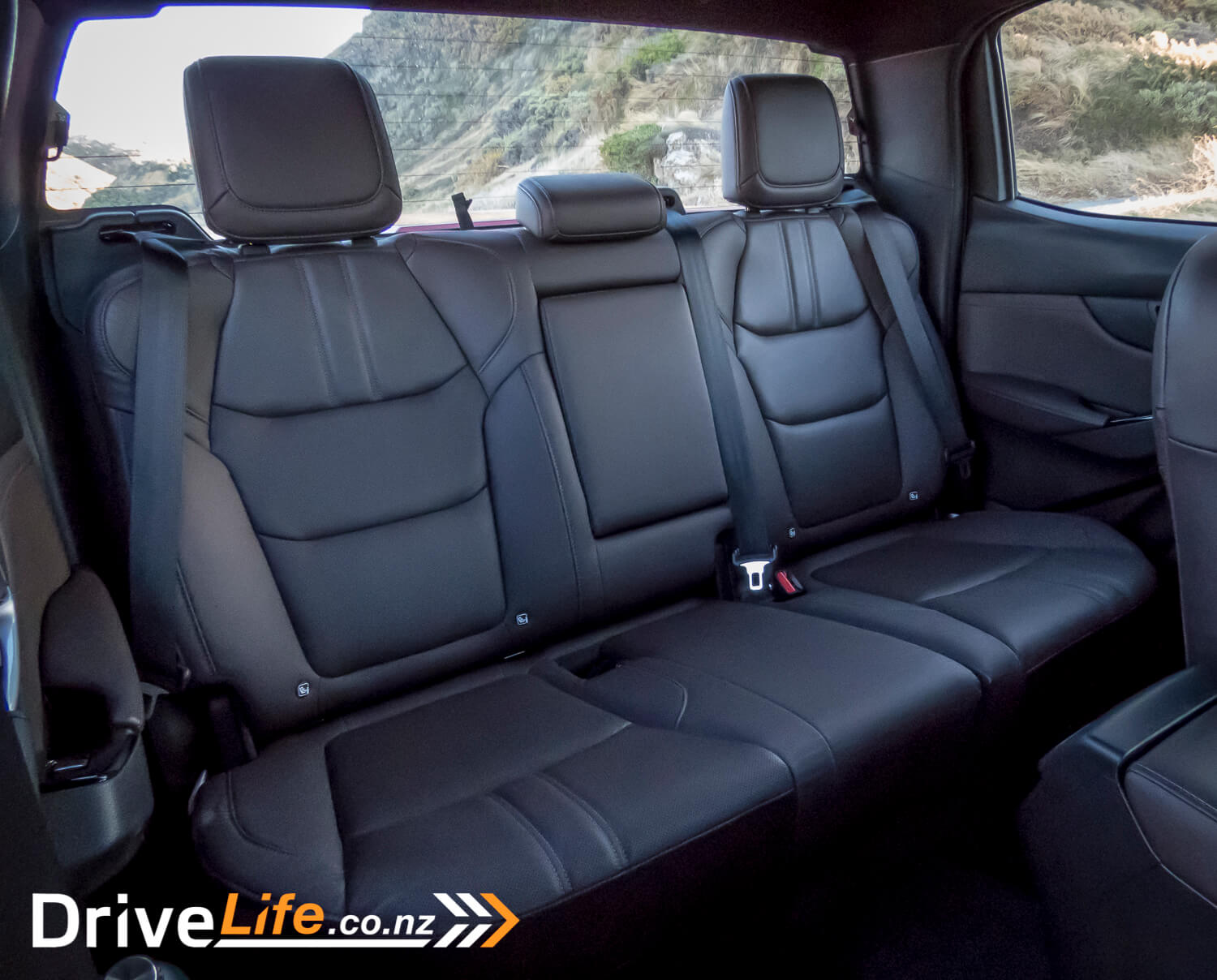
The rear seats are usually an abysmal place to be in most utes, but not so in the BT-50. In the rear, there’s plenty of legroom for passengers, plus the seat backs aren’t mounted directly to the cab, (which many utes are guilty of), meaning the seats are comfortable too. It’s more akin to the rear seats of a hatchback, but it’s taller and roomier.
There’s also a USB port in the back and a hook on the back of the passenger’s seat for hanging a bag. Although a small feature, you really can’t underrate them. Remember, there’s no boot for groceries in a Ute.

The steering wheel is also lifted from a D-Max. There’s few complaints to be had, aside from a blank switch on the steering wheel. It’s odd to see this on a top-specced vehicle, especially in a location where you’ll see it all-the-time.
So far, the BT-50 interior has proven to be a pleasant space. It’s definitely one of the better quality interiors which I’ve encountered in the ute world. It’s also well equipped for the price point.
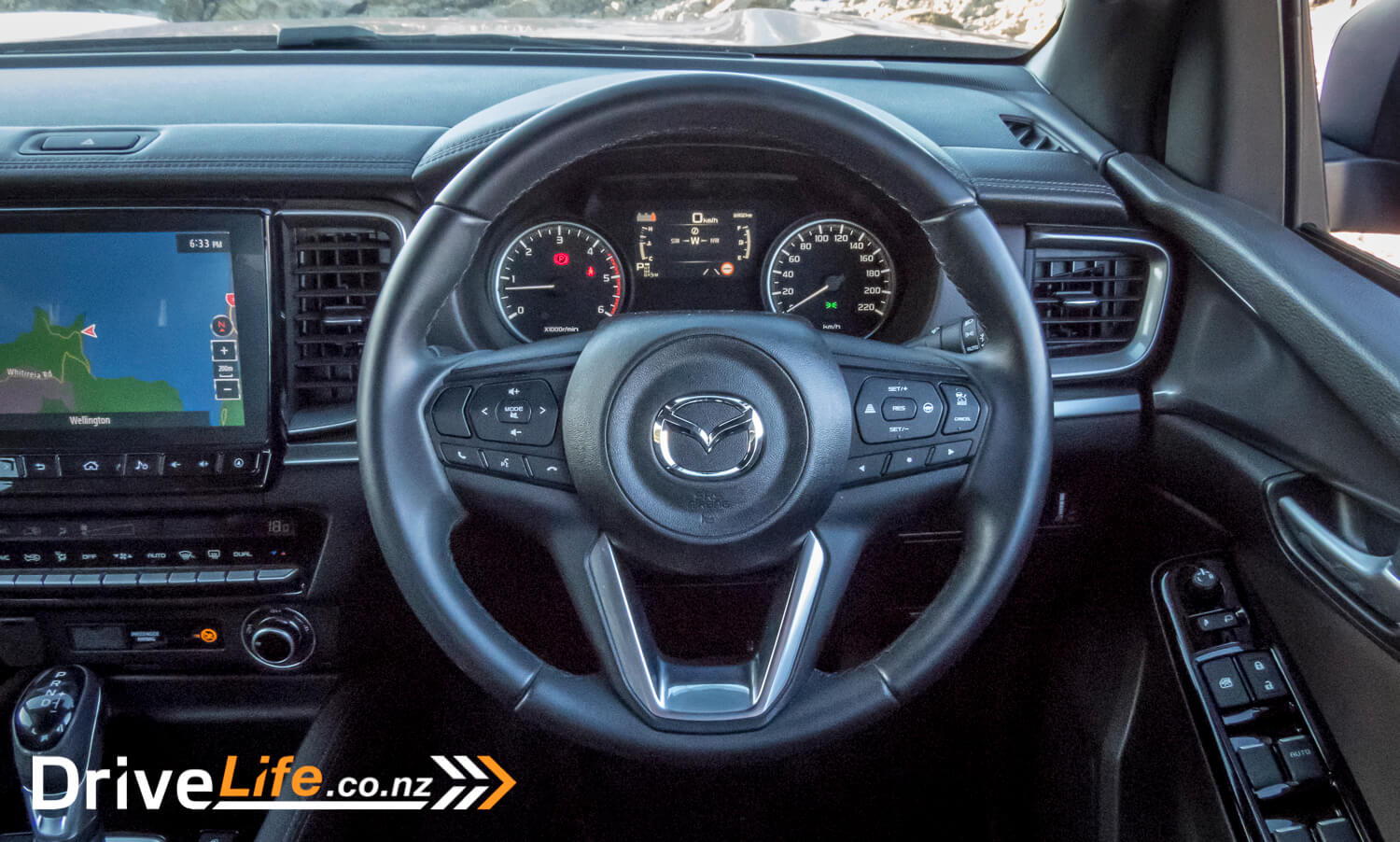
However, it doesn’t really feel like a Mazda product. Sure, this isn’t at all surprising given what we’ve discussed, but it is still relevant. Recently, Mazda has been blowing us away with the quality of their interiors. Drive a Mazda 3, and you’ll be left wondering why an Audi A3 costs so much. This BT-50, on the other hand, isn’t quite of the standard we’ve been seeing from Mazda lately. Perhaps we’re being spoiled a bit, maybe?
There’s two final complaints to be had with the interior. To start, there’s no footrest for the driver, meaning your foot sits directly on the carpet. Not good for muddy boots.
My next complaint is with the handbrake. What’s the drama? Well, when you yank it on, it feels pieces of plastic are rubbing together as opposed to hearing a robust mechanical click. It honestly feels like you’ve broken something. It’s not reassuring, and does impact your perception of quality.
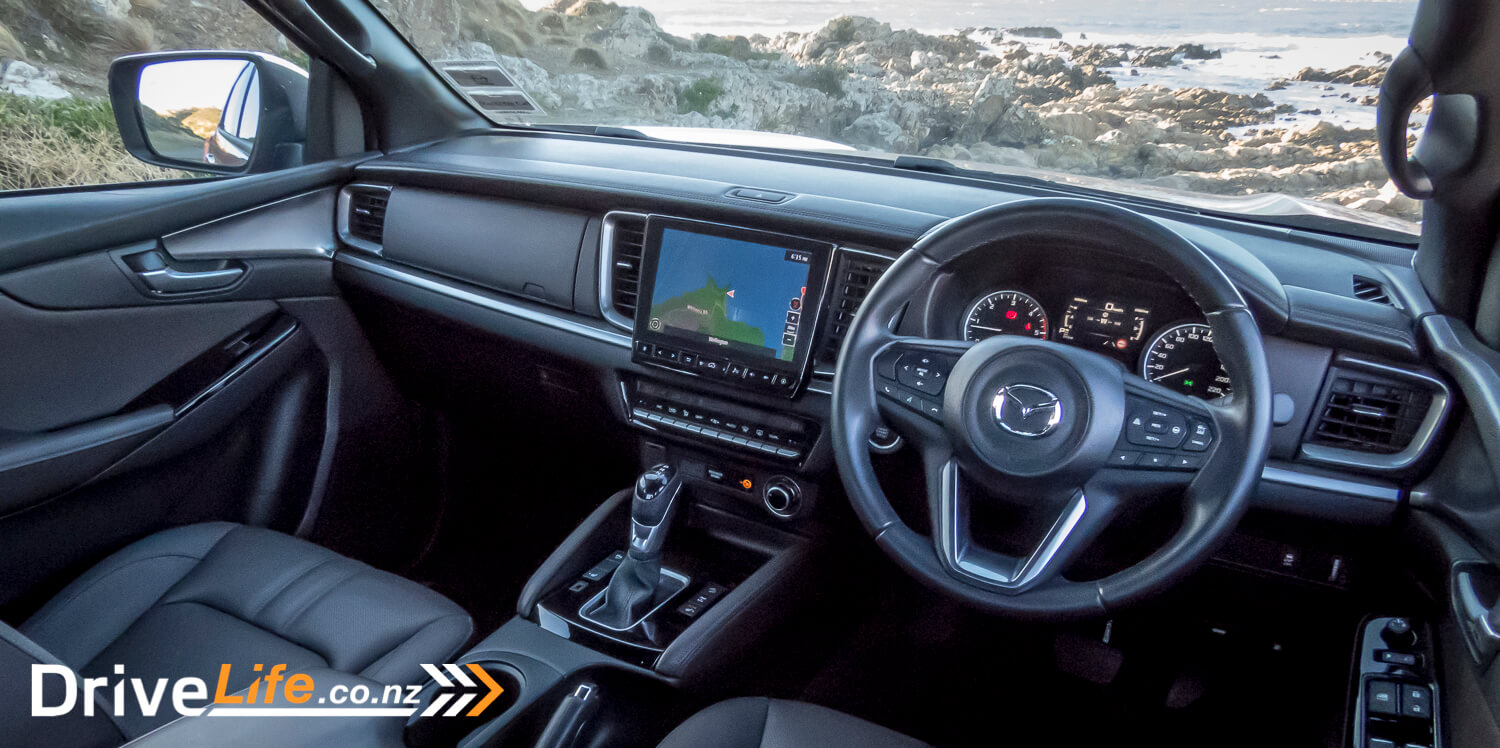
What’s It Like To Drive A 2021 Mazda BT-50 Limited?
As we’d mentioned earlier, underneath the bonnet of the BT-50 is an Isuzu engine, a 3.0-litre 4-cylinder turbo-diesel, pumping out 140kW of power and 450Nm of torque, paired with a 6-speed automatic gearbox. It’s a robust unit from a manufacturer with a good reputation for its diesels.
The torque is accessed nice and low, from around 1,600rpm to 2,600rpm. There’s a healthy low-middle range on the BT-50. Power delivery is smooth, and reasonably quiet too.
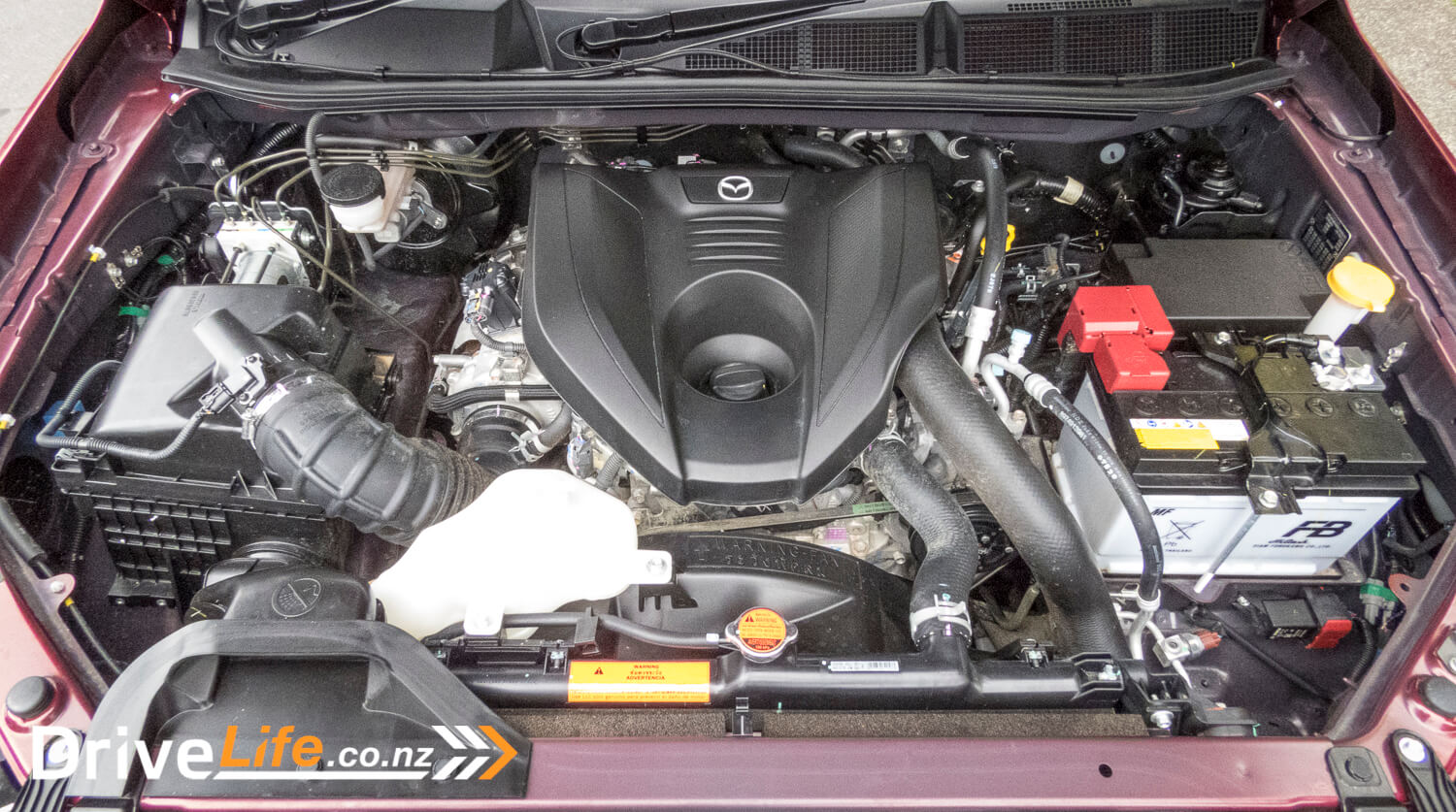
It does become a tad noisy and slightly buzzy at the top-end, but name a turbodiesel ute which doesn’t do this. Importantly, the engine doesn’t feel overly exerted when you make demands from it.
The 6-speed auto transmission was also a highlight. It shifted seamlessly between gears, creating no obvious powerband gaps as it distributed its power and torque. It does make you wonder why some manufacturers think they need more gears than this.
An unexpected, yet impressive quality was the fuel economy – I know! From a 3.0-litre turbodiesel! On a mix of motorway and city driving, we achieved a fuel economy result of 9.0L/100kms. It’s a tad higher than Isuzu’s claimed figure of 8.0L/100kms, but many turbodiesel utes we’ve tested run into the 10.0L/100kms range and require a gentle foot to get them any lower.
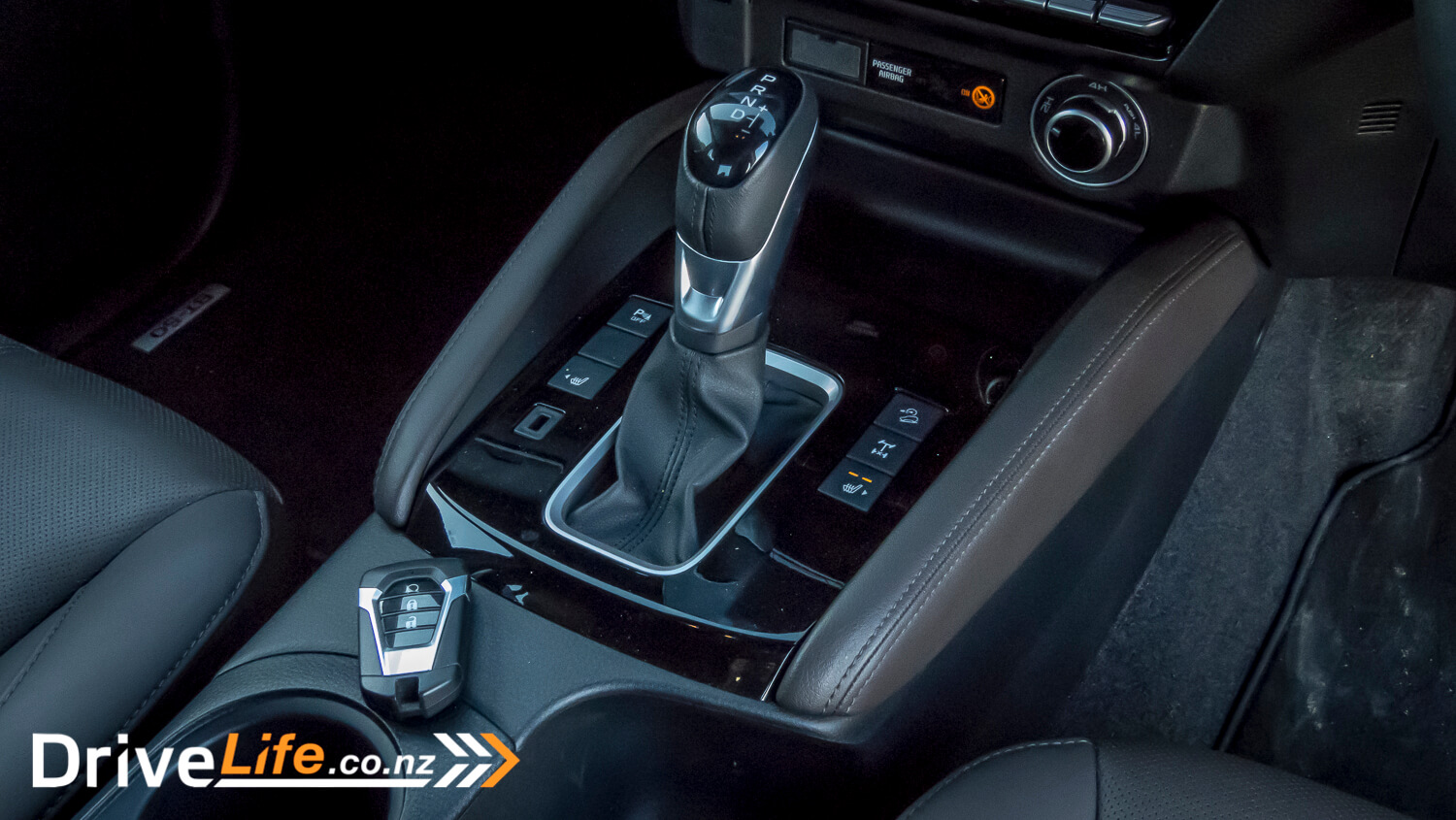
Driving the BT-50 through the streets of Wellington was reasonably pleasant. The steering is electric – it’s considerably lighter than recent utes we’ve tested. The front suspension set-up is reasonably soft, paired with Bridgestone Dueller tyres, it felt reasonably supple at town speeds. It’s actually a reasonably approachable vehicle, and shouldn’t intimidate you too much if you’re not used to utes.
Of course, this is a vehicle with a ladder chassis and rear leaf springs. Start exceeding town speeds and it does start behaving in a manner befitting to a conventional ute. In short, it’s not the most comfortable experience on undulating and patcher roads, but it’s still perfectly liveable. It merely goes with the territory of ute ownership.
Through some quicker corners, the BT-50 would manage itself. It never really fell out of composure, but did have some earlier than expected tyre squeal.
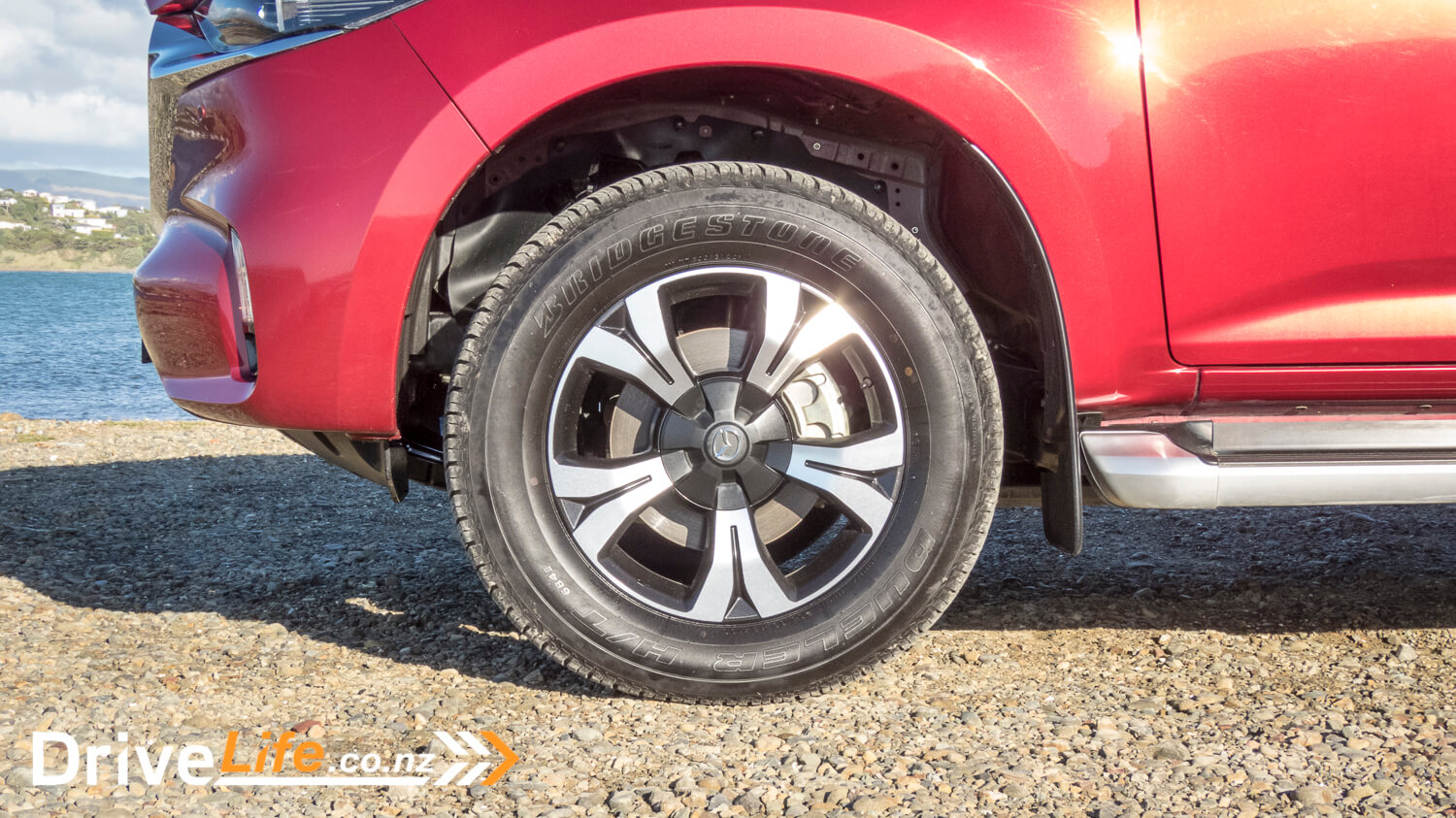
Being 2021, the BT-50 is equipped with a whole catalogue of safety systems, which helps the ute achieve its 5-star NCAP rating. The systems generally work pretty well, but like any manufacturer, these systems are not without their quirks.
In the BT-50, some of these systems are quite sensitive and intrusive. The fact that the prompt is also a loud monotone beep, makes these systems pretty annoying at times. A number of new Mazda models have a pleasant chime to accompany their safety systems, which seems to be another indication that this isn’t a Mazda product.
As for the actual annoyances, the traffic sign recognition software beeps each time you exceed the recognised speed limit. Not great for a tradie on-the-run.
It was a greater pain in central Wellington, which is currently a city of road works, and therefore a city of regular speed limit changes. Fortunately, you can switch off the chime, so that solved one problem.
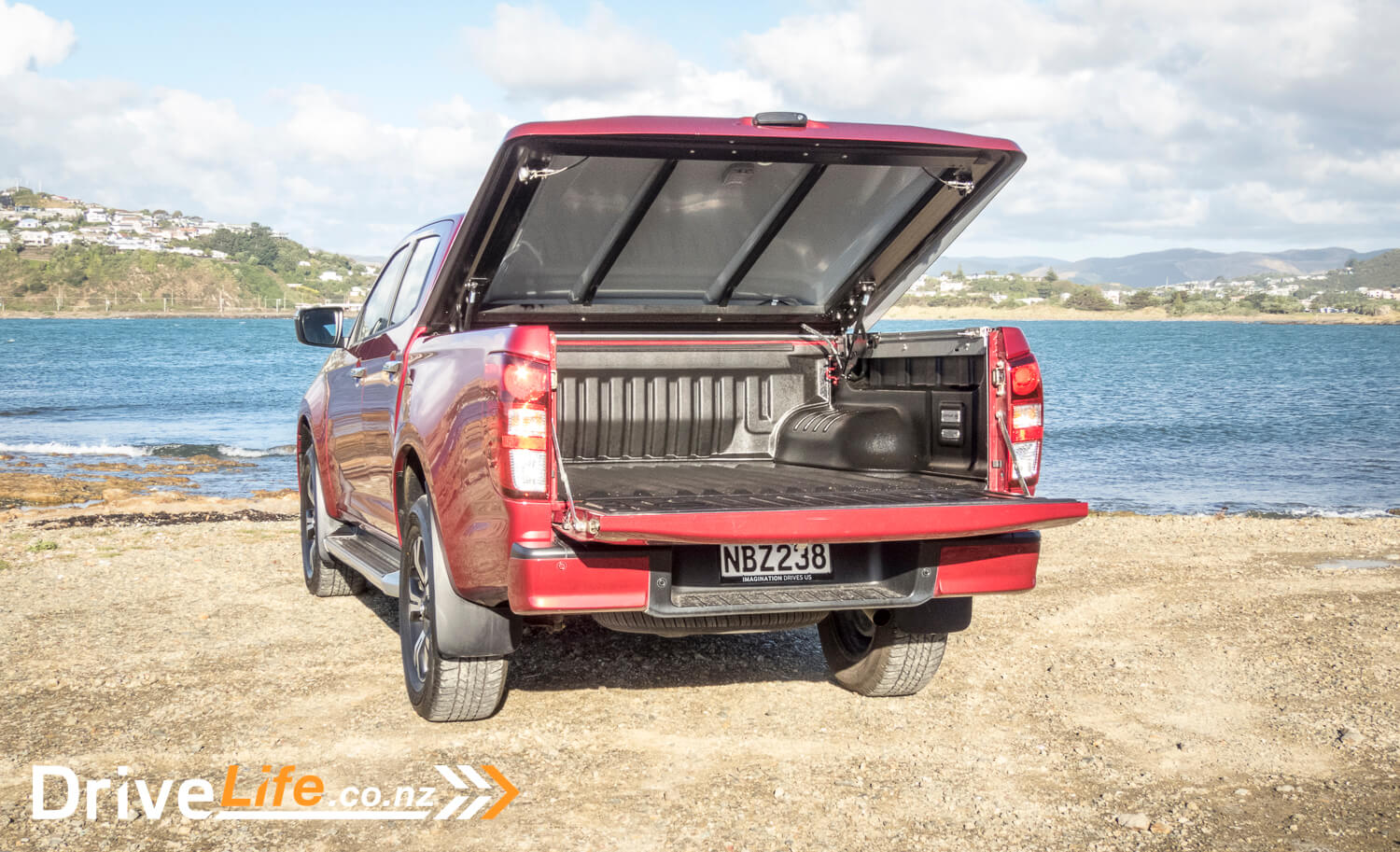
Another quirk was with the adaptive cruise control. The system functions well and operates down to a halt – Great! But stay vigilant, because once it stops, the system will self-cancel. Dumb!
I also had an instance where adaptive cruise control was operating, and by its own volition, managed to trigger one of the forward collision systems prompting the driver to BRAKE! I should clarify and say this only occurred once in a 70Kp/h zone, but the circumstances didn’t seem exceptional.
The lane keep assist was also a tad too effective for my tastes. I found that it would sometimes trigger before seemingly touching the line, which is great for anywhere except a tight road. Unfortunately, we often find ourselves on tight roads in New Zealand.
Ignoring the safety tech quirks, the BT-50 was quite a pleasant urban driver. It performs well, and by-in-large, the safety systems work fine even if they are a bit intrusive. The fuel economy is the highlight, and makes this ute a bit of a score if you do the school run a lot, which is where I spy a few utes these days.
What’s The Competition For The 2021 Mazda BT-50 Limited?
2021 is the year of the ute update. We’ve seen an updated Hilux, Navara, D-Max and another is due for the Ranger. Here are most of your current options for this price point.
| Brand/Model | Engine | Power (kW)/ Torque (Nm) | Economy, L/100km | Tow Rating, Kg (Unbraked/Braked) | Price |
| Ford Ranger Wildtrak X | 2-litre 4-cylinder twin turbodiesel | 157/500 | 8.4 | 750/3500 | $75,490 |
| Isuzu D-Max LS | 3.0-litre 4-cylinder turbodiesel | 140/450 | 7.7 | 750/3500 | $67,990 |
| Nissan Navara ST-X | 2.3-litre 4-cylinder twin-turbo diesel | 140/450 | – | 750/3500 | $67,490 |
| Ford Ranger XLT | 2-litre 4-cylinder twin turbodiesel | 157/500 | 8.4 | 750/3500 | $65,990 |
| Volkswagen Amarok Comfortline | 2-litre 4-cylinder twin-turbo diesel | 132/420 | 8.5 | 750/3200 | $63,000 |
| Mazda BT-50 Limited | 3.0-litre 4-cylinder turbodiesel | 140/450 | 8.0 | 750/3500 | $60,990 |
| Toyota Hilux SR5 Cruiser | 2.8-litre 4-cylinder turbodiesel | 150/500 | 7.9 | 750/3500 | $59,990 |
| Mitsubishi Triton VRX | 2.4-litre 4-cylinder turbodiesel | 135/437 | 8.6 | 750/3500 | $51,990 |
What are The Pros And Cons For The 2021 Mazda BT-50 Limited?
Pros
- Engine performance
- Smooth transmission
- Excellent fuel economy
- Nicely appointed interior with a good level of equipment
- Value for money – cheaper than the vehicle it’s based off!
- It’s an Isuzu D-Max
Cons
- Loud and intrusive safety technology
- Self-cancelling adaptive cruise
- Disconcerting handbrake feel
- No driver’s footrest
- Awkward front seat for wider builds
- It’s an Isuzu D-Max
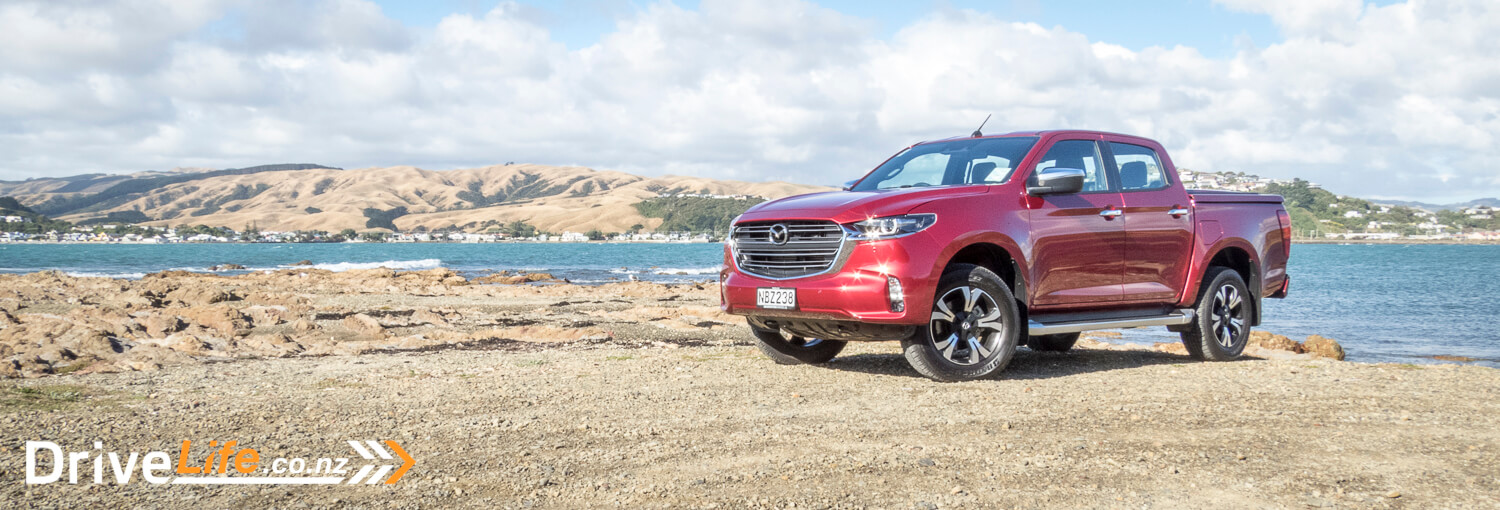
2021 Mazda BT-50 Limited – Specifications
| Vehicle Type | 5-door Double-cab Ute (4X4) |
| Starting Price | $60,990 |
| Price as Tested | $64,200 |
| Engine | 3-litre 4-cylinder turbo-diesel |
| Power, Torque (kW/Nm) | 140/450 |
| Transmission | 6-speed automatic |
| Spare Wheel | Full size (alloy) |
| Kerb Weight, Kg | 2,035 |
| Length x Width x Height (mm) | 5280 x 1870 x 1790 |
| Fuel tank Capacity, litres | 76 |
| Fuel Economy L/100km (Combined) | Advertised Spec – 8.0 Real-World Test – 9.0 |
| Towing Capacity Kg, unbraked/braked | 750/3500 |
| Tray Payload | 1,065kg (Other models up to 1,085kg) |
| Maximum Wading Depth | 800mm |
| Approach Angle | 30.4o |
| Turning Circle | 12.5m Small: 6-10m / Medium 10-12m / Large 12m+ |
| Warranty | 5-year/150,000km new vehicle warranty 5-year Roadside Assistance |
| ANCAP Safety Ratings | 5 Star |


